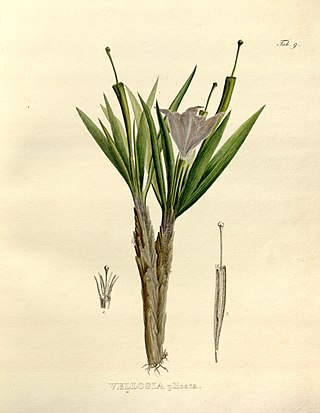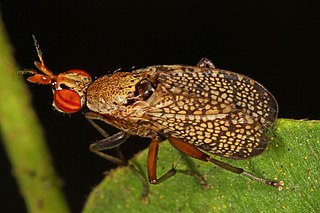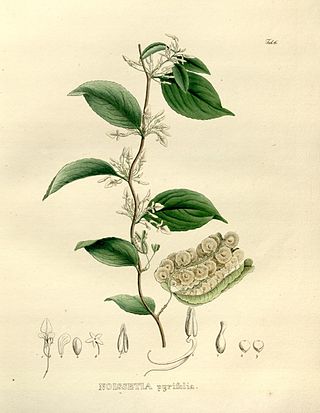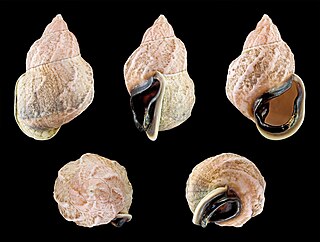
Gymnodactylus is a genus of Brazilian geckos, commonly known as naked-toed geckos, in the family Phyllodactylidae.

Crocodilurus is a lizard genus with only one species Crocodilurus amazonicus, that belongs to the family Teiidae. Its common name is the 'crocodile' tegu, and is locally known as the jacarerana. This semi-aquatic predatory lizard has a flattened, paddle-like tail.

Kentropyx is a genus of whiptail lizards in the family Teiidae. The genus is endemic to South America including Trinidad and Barbados.
Heterodactylus is a genus of lizards in the family Gymnophthalmidae. The genus is endemic to Brazil.
Leposoma is a genus of South American lizards in the family Gymnophthalmidae.

Johann Baptist Ritter von Spix was a German biologist. From his expedition to Brazil, he brought to Germany a large variety of specimens of plants, insects, mammals, birds, amphibians and fish. They constitute an important basis for today's National Zoological Collection in Munich. Numerous examples of his ethnographic collections, such as dance masks and the like, are now part of the collection of the Museum of Ethnography in Munich.

Carl Friedrich Philipp von Martius was a German botanist and explorer.

Josef Anton Maximilian Perty was a German naturalist and entomologist. He was a professor of zoology and comparative anatomy at the University of Bern. His first name is sometimes spelled as "Joseph".
Hoplias microcephalus is a species of trahiras. It is a tropical, benthopelagic freshwater fish which is known to inhabit the São Francisco River in Brazil. Males can reach a maximum length of 35.6 centimetres.

Kentropyx calcarata, commonly known as the striped forest whiptail, is a species of lizard endemic to South America.

Schubertia is a genus of flowering plants in the family Apocynaceae, first described as a genus in 1810. It is native to South America.

Nanuza is a plant genus in the family Velloziaceae, described as a genus in 1976. The entire genus is endemic to Brazil.

Tetanocerini is a tribe of flies in the family Sciomyzidae. There are more than 400 described species in the tribe.
Thecomyia is a Neotropical genus of flies in the family Sciomyzidae, the marsh flies or snail-killing flies.

The Brazilian gecko is a species of gecko, a lizard in the family Phyllodactylidae. The species is endemic to South America. The Brazilian Gecko feeds mostly on arthropods specifically Diptera.

Qualea parviflora, known as pau-terra in Portuguese, is a deciduous tree indigenous to Bolivia, Brazil, and Paraguay. The tree favors dry climates like the tropical savanna of the cerrado.

Noisettia is a genus of flowering plants in the violet family Violaceae, with a single known species.

Calyptrion is a genus of flowering plants in the violet family Violaceae, with four known species.

Anchietea is a genus of flowering plants in the violet family Violaceae, with six accepted species, found in tropical South America.

Auris is a genus of small to medium-sized tropical or sub-tropical, air-breathing land snails, pulmonate gastropod mollusks in the subfamily Bulimulinae within the family Bulimulidae.















